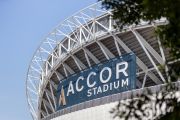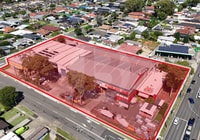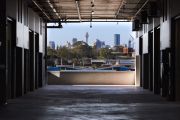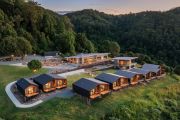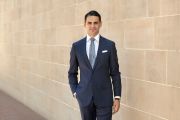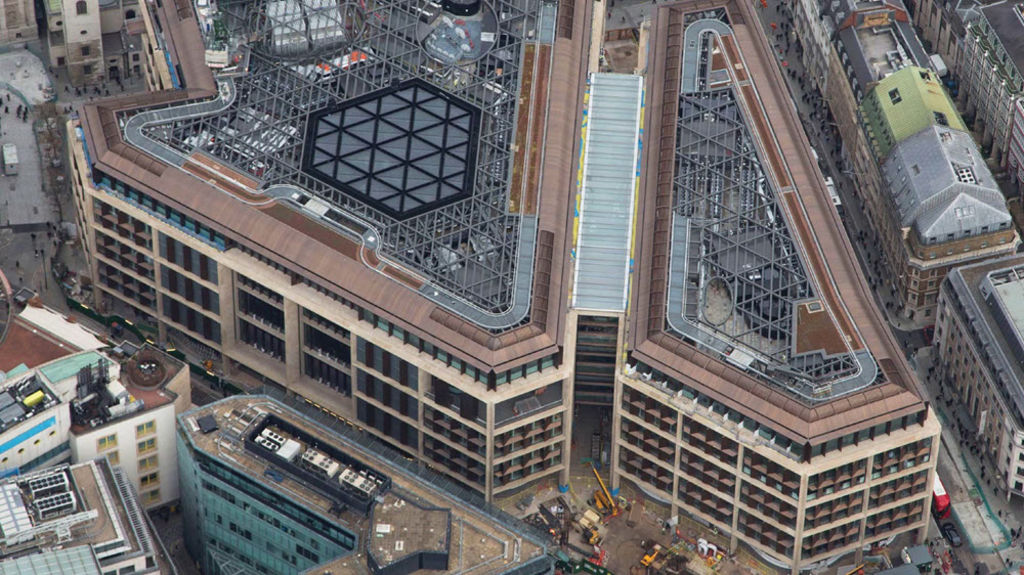
Bloomberg's new London office billed as the world's most sustainable
The most sustainable commercial building in the world has officially opened its doors, offering a glimpse of “the workplace of the future”.
Global news and financial technology giant Bloomberg opened its new European headquarters in London this month after a seven-year development and building process. It features breathable “gills” on the outside, a large-scale “pantry” on the inside and an array of technological innovations aimed to driving sustainability.
The office space takes up an entire city block, at 1.3 hectares, and utilises traditional sustainability solutions along with new, unique high-tech advances to achieve the highest ever BREEAM score for an office.
The global sustainability standard gave the building a 98.5 per cent rating thanks to its “relentless focus on innovation”.
The company says it “defines a new generation of 21st century office design”, and is the first wholly owned and designed Bloomberg building in the world.
For Bloomberg founder and former New York City mayor Michael Bloomberg, “there’s nothing like it in the world”.
“From day one, we set out to push the boundaries of sustainable office design – and to create a place that excites and inspires our employees,” Mr Bloomberg said.
“The two missions went hand in hand, and I hope we’ve set a new standard for what an office environment can be. We believe that environmentally friendly practices are as good for business as they are for the planet.”
The building, designed by Foster + Partners, is split into two triangular structures connected by a bridge, encompassing more than 100,000 square metres. It climbs eight storeys into the sky and two down into the ground, and sits in a historic area of the city, between the Bank of England and St Paul’s Cathedral.
Its use of sustainable solutions will save 25 million litres of water – enough to fill ten Olympic swimming pools – each year, including collected rainwater and vacuum toilets similar to those on planes.
The office’s roof is especially unique, featuring a petal-leaf design that combines heating, cooling, lighting and acoustic functions, along with half a million LED lights.
The building’s bronze facade is lined with breathable “gills”, which can open and close with the weather to provide natural ventilation and reduce the dependency on mechanical ventilation.
An innovation smart CO2 sensing control can change the way this air is distributed based on how many people are in each area of the building at any given time.
Foster + Partners’ Norman Foster said it was designed in close partnership with Mr Bloomberg himself, beginning with a “meeting of minds”.
“The project evolved from there on in to a building that is one of the most sustainable in the world. This project has been an exemplar of collaboration – made possible by the extraordinary vision and personal involvement of Mike Bloomberg, who has been an inspiration every step of the way,” Mr Foster said.
“The design is a highly specific response to Bloomberg’s needs, it is an embodiment of the organisation and its core values, embracing the latest principles of sustainable design, and will be a magnet for global talent to the City of London.”
Inside the building, a large spiral ramp travels seven floors, with the sixth level featuring a double-height, column-free “pantry”, acting as the central hub. This area is meant to act as a meeting place for employees, and will offer snacks and coffee.
Even the layout of the desks is unique, arranged into circular pods surrounding a central table, allowing workers to quickly swivel into a meeting. The desks can also be adjusted for standing, and can be extended to allow a co-worker to sit alongside.
BRE Global Sustainability Group director Alan Yates said the range of innovations in the building helped it to reach the highest sustainability rating ever.
“What sets the Bloomberg building apart is its relentless focus on innovation and its holistic, integrated approach to sustainable construction and design,” Mr Yates said.
“Projects like this are really important in giving confidence to the industry to experiment.”

